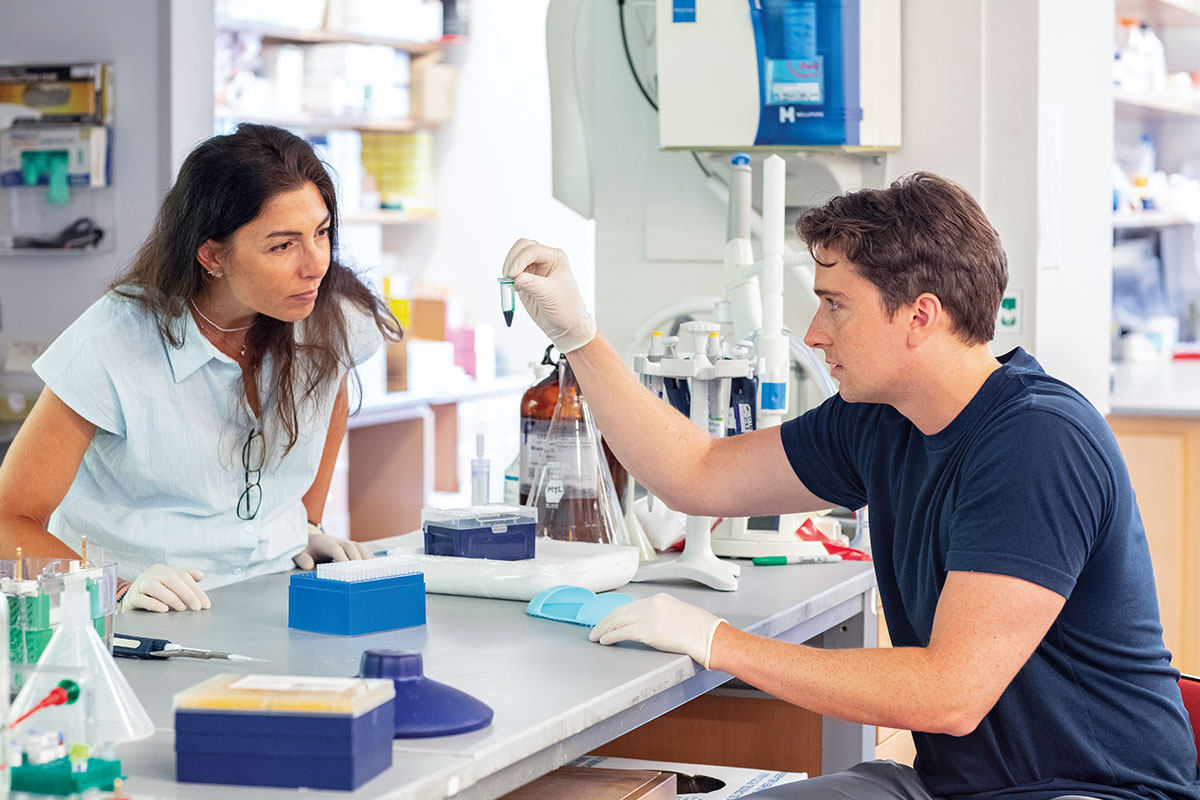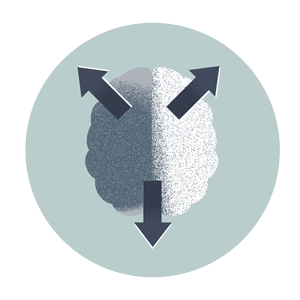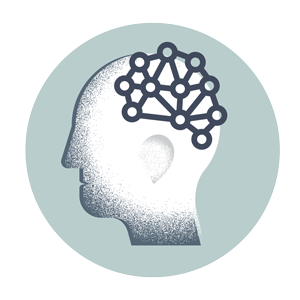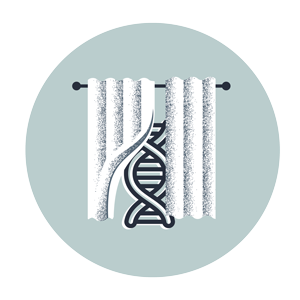Feature
At the center of it all
Researchers on a quest to understand how memory functions may have unexpectedly discovered something about the brain’s organizing system. Can what they’re learning teach us something about the elusive nature of the self?
By Mindy FarabeeBuddhists would tell us that the self is an illusion, and neuroscientists would tend to agree: Where we posit a coherent, integrated individual, they see 180 brain regions all constantly chattering over one another. But if personhood is essentially a fiction, memory may be the thing that fools us into thinking otherwise. No other cognitive process feels so intimately bound up in our experience of ourselves. Memory underpins the basis of personality, our relationship to the world, and how we make decisions about the future.
But what is this thing upon which our entire notion of continuity rests? How does a moment in time—a unique combination of emotion, sensory experience, and cognitive churning—crystallize in the brain? Where does it go after that, only to reemerge, either on cue or seemingly out of nowhere, decades later? What mechanisms determine which moments we hold on to and which we let go of and allow to be lost to history? What, in the end, holds memory together?
“If we could identify how different types of memory interact, could we identify larger, unifying principles that underpin the entire system?”
“We’ve known for a long time where memories are initially formed and stored—in the hippocampus,” says neuroscientist Priya Rajasethupathy. “What we don’t understand is what happens afterward: how they gradually reorganize across the brain, how they evolve over time so that some are stabilized while others are forgotten. And for those memories that we keep, we don’t know what triggers recall.”
Rajasethupathy, who heads the Laboratory of Neural Dynamics and Cognition, could have based a career on tackling any one of those questions. Instead, she reframed the whole question.
“What if instead of focusing in on disparate links in the chain of memory, we zoom out and ask ourselves, How precisely does a memory change and evolve over time?” she says. “If we could identify mechanisms by which working memory and short- and long-term memory interact, could we identify larger, unifying principles that underpin the entire system?”
It’s heady work, and Rajasethupathy, Rockefeller’s Jonathan M. Nelson Family Associate Professor, knew going into it that she would be sorting through the intricacies of genes and molecules and neural circuits. She also knew that she would be spending a lot of time devising new ways to probe memory’s usual suspects—the hippocampus, of course, but also different areas of the cortex now known to play a significant role. But things have taken an intriguing turn. Lately, almost every project in her lab has unexpectedly directed her toward a small, egg-shaped structure situated in the center of your noggin: the thalamus.
Historically, Rajasethupathy says, cognitive neuroscientists didn’t focus too much on the thalamus, because it was thought to simply relay sensation from our environment to the brain. “We didn’t think it was necessarily involved in complex cognitive functions,” she says.
But according to a spate of new studies from her lab, this inconspicuous node has a pivotal role to play at almost every stage, from the moment a memory begins to form to the slow and gradual process of stabilizing it for the duration. These experiments are also raising tantalizing questions about what else scientists might have missed in misunderstanding the thalamus: Might this hub within an endless web of neurons be holding things together in some way—functioning not only as a sort of command center for memory, but potentially also as another kind of linchpin, one that could begin to explain how that unified “me” inexplicably emerges?
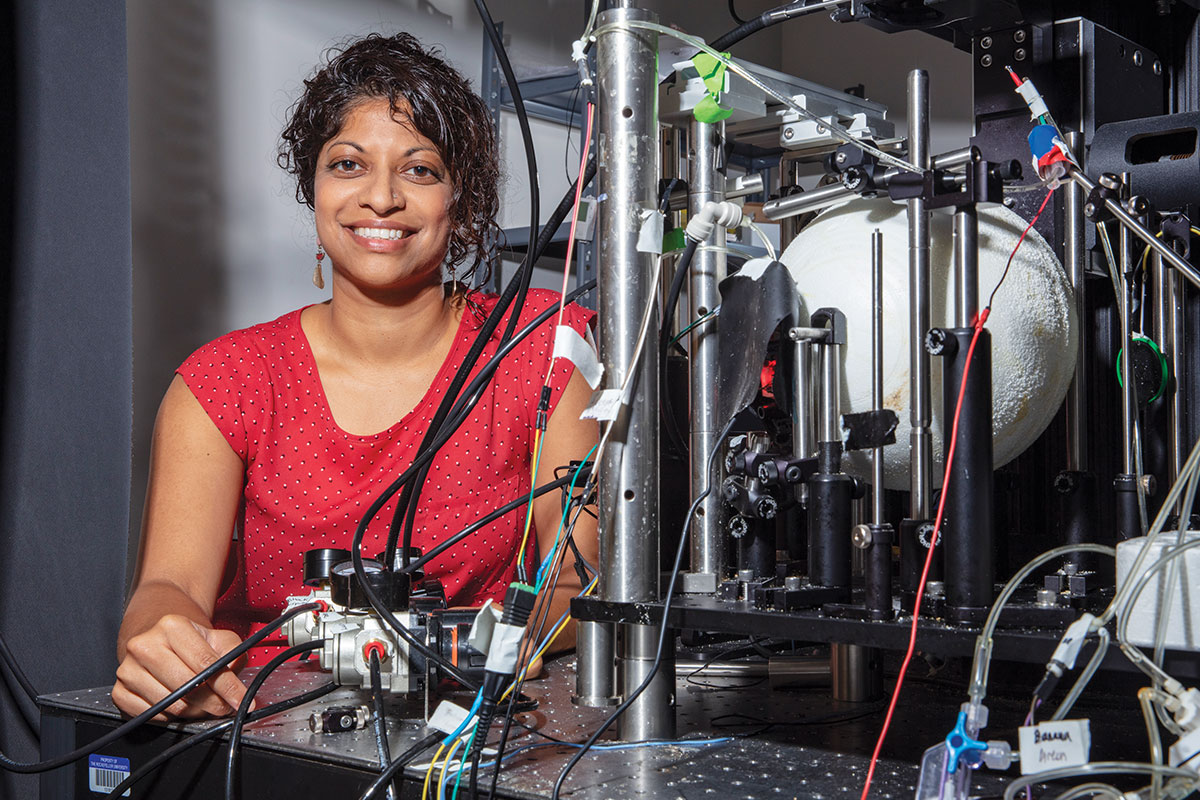
Memory is a complicated process further complicated by its multiple dimensions. There’s the relational type (like remembering that the library is across from the grocery store), but also the procedural kind (like riding a bike), and then the sensory variety (such as the smell of spring rain). It’s a list of birthdays, a timeline of World War II battles, and the ability to follow through on a promise made. It’s knowing the meaning of all the words in this sentence. And when memory fails, that can be either a nuisance easily compensated for by Google or a fundamental unraveling.
Our experiences of forgetting vary in part because each category of memory touches on a different region of the brain with its own nuanced mechanisms for representing the dimension it governs. Years ago, neuroscientists overturned long-held assumptions in the field of memory, most significantly the idea that it functions like a static filing cabinet—a specific site in the brain where past experiences are tucked away. Everyone now knows that memory isn’t a pin on a map but a dynamic process driven by recurrent signaling and rewiring, that’s widely distributed throughout the brain, including across the prefrontal cortex (PFC), where both our most fleeting and longest-lasting impressions pop up, and the entorhinal cortex, a relatively thick band of gray matter near the back of your ears that’s active in initial processing. Unpacking this intricate dance could help reverse the ravages of dementia and other neurodegenerative diseases. It may also open up therapeutic avenues for intractable mental illnesses like schizophrenia that include debilitating memory deficits.
But in pursuit of such a knotty subject, scientists have caught only partial glimpses. In the 1970s, pioneering neuroscientist Patricia Goldman-Rakic and her colleagues first captured evidence that working memory—those few seconds to a minute in which information is actively held and used (say, as we respond to a friend’s text)—resided in the PFC. They found the evidence within a numerical anomaly. Neurons are lightning fast, firing on average at millisecond intervals. But when Goldman-Rakic and her team gave a working memory task to a rhesus monkey, they recorded a specific group of cells in the PFC firing continuously for many seconds—a long haul in the world of neurons—as their subjects actively recalled information.
These observations were groundbreaking. But many decades later, it’s still not clear how these particular neurons in the PFC stay active for so long and what unique properties allow them to do so.
The experiment led them right to the thalamus, a region mostly ignored in the study of cognition.
Three years ago, Rajasethupathy’s lab discovered a key piece in this puzzle. The researchers used a traditional approach to tax a mouse’s working memory: Put it in a maze, show it a treat, relocate the animal for a brief interval, then release it and track how quickly it finds its way back to the reward. But the scientists added their own twist on this classic setup: Don’t form a hypothesis.
Typically, researchers looking for the gene that drives a certain behavior will create a list of possible candidates, then test each one using genetically altered animals. Instead, in a process as laborious as it was ingenious, Rajasethupathy’s lab obtained hundreds of genetically diverse mice representative of variations found in nature. They let these diverse mice run through the maze, segregated out the high performers, mapped their genomes, and identified one gene expressed at elevated levels in those brains.
That gene produces a receptor known as GPR12, and mice who excelled at working memory possessed more than twice the number of these receptors than did low performers. Moreover, when the forgetful comrades had their GPR12 levels artificially increased, their accuracy suddenly nearly doubled.
“It’s rare to find a single gene with such a large effect on a complex cognitive process,” says Alessandra Bonito-Oliva, a senior research associate in Rajasethupathy’s lab who is developing therapeutic approaches to target GPR12. Things got even more interesting when she and her colleagues mapped GPR12’s distribution in the mouse brain. “This receptor has one prominent function: to bring two regions into sync with each other to amplify and sustain brain activity during working memory,” she says. “And it functions predominantly in just one part of the brain.”
To everyone’s surprise, that place turned out to be the thalamus, in particular, its middle portion.
It proved to be the beginning of an exhilarating run of experiments.
We love the thalamus here,” says James Brandt, a fourth-year Ph.D. student in Rajasethupathy’s lab who has been working to unpack the molecular characteristics of GPR12 and how it interacts with other proteins to synchronize the brain during working memory. (Ultimately, the lab wants to connect the dots between how GPR12 functions in single cells of the thalamus, how that sustains long-range coordinated brain activity between the thalamus and frontal cortex, and how that maintains working memories as animals go about their various activities.) “After our initial findings,” Brandt notes, “Priya was able to conceptualize all kinds of ways the thalamus could be involved in memory.”
The Greek physician-philosopher Galen gave the thalamus its name in the second century CE, using the Greek word for a private storehouse or living quarters because he believed it to be a hollow vessel for channeling the “vital spirit” that governed our vision. Experiments done in the 18th century introduced the idea of the thalamus as a sensory relay station; by the 1980s, scientists knew its connections extended to the amygdala, the hippocampus, and the entire cerebral cortex. They subsequently learned that the thalamus wasn’t actually one thing, but more of a neuronal sausage packed with different clusters related to sensory information, physical movement, and arousal states. In the 2000s, researchers discovered its role in regulating sleep-wake cycles and that it also steers our directed attention in any given moment.

Meanwhile, the cortex was stealing all the cognitive thunder—particularly the prefrontal cortex, where executive function was officially mapped in the early 1970s. Up to that point, much of what scientists knew about the human brain had been learned as a consequence of nonfatal injuries, which are more likely to occur in the peripheral, or cortical, regions. In one notorious industrial accident, the 19th-century railroad engineer Phineas Gage received a spike to the frontal lobe; the resulting personality and cognitive shifts helped give birth to the idea of a “control mechanism” residing in the PFC.
With the development of MRI, the thalamus again got short shrift; it was considered too “noisy” to image effectively due to its proximity to the brain’s fluid-filled ventricles. But there was an additional technical challenge stemming from its sausage-like quality. Higher-order brains still outcompute computers, so capturing and analyzing the broad swath of raw information needed to follow a thought as it moves around the brain are daunting feats of engineering. One strategy for dealing with those limitations is bulk resolution, in which all the outputs from neurons in a given region are bundled and averaged together. The technology needed to capture a more informative level of detail is largely lacking; Rajasethupathy, whose background is in biology and engineering, works with her group to invent it.
For instance, her lab was the first to generate 3D images at neuron-level resolution in three different brain regions simultaneously, something they accomplished even as the mouse moved about the maze. “That kind of detailed resolution provides so much more understanding in trying to make sense of a heterogeneous brain region such as the thalamus,” says Brandt. “There are so many different kinds of neurons in there. If you bulk that data together, quiet motor neurons and firing dopamine neurons could just cancel each other out—your data looks like nothing is happening in a spot where, in fact, something really important and very specific is happening.”
Big insights come from tiny treadmills. In one darkened corner of her sprawling lab, Rajasethupathy’s team has built a very 21st-century miniature labyrinth, where mice navigate in VR environments to form and retrieve longer-term memories. Here, mice perched atop a Styrofoam ball enter an endless number of “rooms” as sights, sounds, and scents are combined around them in unique ways. Here is where Rajasethupathy’s team learned something unexpected about what happens in the mysterious interval between when memories form and when they are tucked away for the duration.
As researchers came to understand the distributed nature of memory, the prefrontal cortex emerged as the warehouse—the long-term destination for short-term memories first formed in the hippocampus. But that’s about as far as our knowledge went. How that happens, and how the brain decides which memories to archive, was largely uncharted territory. Attempts to explore further have been limited by current constraints on imaging technology, which typically has the capability to record high levels of localized detail in short bursts. Long-term memories, meanwhile, take weeks to consolidate in rodents and months to years in humans.
By devising a method to record multiple brain areas in a behaving animal continuously for up to a month, Rajasethupathy and her team were the first to see that there is a distinct brain highway shuttling memories from short-term into longer-term storage. Unexpectedly, this circuit again involved the thalamus—this time its anterior portion—meaning that the thalamus is not just the primary link coordinating working memory. It’s also holding things together for the long term: an intermediary acting as archivist in chief, stamping only the most salient events “Highly significant. Please send to the PFC.”
How does your thalamus decide what’s important to you? “The question of saliency is such a subjective question,” says Bonito-Oliva, who worked on the experiment. “It fluctuates based on numerous factors, including your current physiological state, personal preferences, past experiences, or in-the-moment understanding of the importance of the information.”
Repetition also plays a defining role in determining what you come to value: Is this the seventh time your classical music–loving father took you to the symphony or the 10th time your science-loving mother took you to the natural history museum? Add that to all the above and it’s easier to see how, as memories accrue over a lifetime, the labile neurochemistry of saliency and the malleable structure of personality may be shaping each other.
The team discovered that for the brain, the process of determining saliency doesn’t stop once a memory has been consolidated: It goes on and on, perhaps indefinitely. Using optogenetics, a technique that employs light to alternately inhibit and boost regional function, they determined that the anterior thalamus plays referee, continuously evaluating emotional quality and intensity over time to decide whether a given memory still hits the threshold.
“We validated what was driving this activity four different ways,” says former lab member Josue Regalado, one of the experiment’s codesigners. “By the time we got to the third, I was like, this is really something.”
Regalado recalls the moment from his desk in the group’s break room, where worn copies of 19th- and early 20th-century thinkers like Eccles, Russell, Whitehead, and Wittgenstein sit stacked on the shelves above. Descartes (“I think, therefore I am”) he carries everywhere, tattooed on his left arm as an illustration of the philosopher’s conception of mind-body dualism.
Rajasethupathy is known for creatively combining different fields in her work, and her wide-ranging interests are reflected in the staffing of her lab. Regalado is a bit of yin to Brandt and Bonito-Oliva’s yang—while they are probing deep into the molecular heart of GPR12, he’s pondering how the whole system wires itself together.
“One way to think of it is that your hippocampus learns very quickly, but your cortex learns very slowly,” he says. “The thalamus may be the thing that’s linking the two and teaching the cortex.”
This much we now know: “The thalamus is not just capturing what’s out there in the world in order to pass it along to the higher brain,” Rajasethupathy says. “We can see it leveraging its own data collection and actively sculpting and routing information to higher-order brain areas. It can help curate what’s really important to the organism. This is an evolving anatomical understanding.”
Where this understanding may evolve next could resonate far beyond memory studies. Even in its simplest moments, it’s a comic understatement to say that your brain is a complicated machine. In a single day, it outputs around 74 gigabytes of data, navigating through 180 internal regions, two hemispheres, and both the cortical and subcortical layers. Which begs a question that scientists cannot yet answer: How do all the various and sundry pulses and signals zooming around your head somehow add up to recognizable feelings, logical actions, and brilliant ideas instead of disintegrating into noise?
The answer may lie in some kind of organizing structures—mini–command centers that shuttle information around while simultaneously monitoring and interpreting it. For Rajasethupathy, the existence of such a system would help explain the lingering scientific mystery of coherence. “It makes sense that the thalamus could be actually orchestrating a lot of things,” she says. “All of a sudden, the complexity seems manageable.”
If that’s true, then the thalamus, sitting right in the middle of it all, could be pointing the way there, as a structure both simple and complex, operating on short and long timescales, connected to everything—a conductor of sorts for the symphony of thought.
